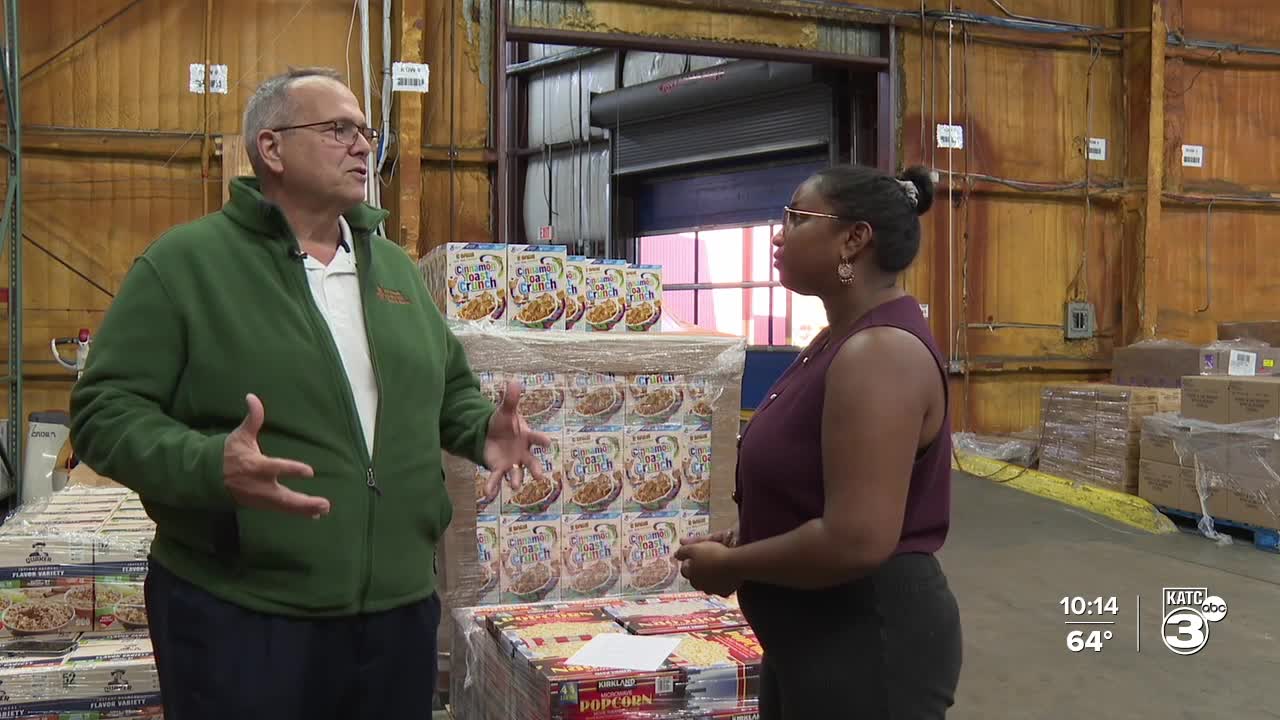LAFAYETTE PARISH (LAFAYETTE) — As November approaches, food banks across Acadiana are preparing for a possible wave of new clients amid the ongoing government shutdown.
According to Paul Scelfo, chief regional officer at Second Harvest Food Bank, up to 30% of people who rely on SNAP benefits to eat could be without food by Saturday.
“You know, we’ve always been able to step up during disasters and reach out to the community,” Scelfo said. “We’re treating this the same way.”
The shutdown has left thousands of federal employees and benefit recipients uncertain about their next paycheck or meal. Scelfo said the effects are hitting close to home.
“It’s your next-door neighbor,” said Lemel Jones, Second Harvest's impact coordinator for Acadiana. “I learned that early on in the midst of Hurricane Katrina — you never know how close you are to being that person in need.”
Jones has been with the organization for 20 years and has served all over the country. She said food banks are preparing for a sharp increase in demand.
“I’m weighing this box because we know many of our families are going to be dealing with a large influx,” Jones said. “Our partner agencies out in the field need to know how to pack a standard box so we can make it through this process.”
Gov. Jeff Landry recently announced a plan to use $150 million in state funds to temporarily continue some benefits. Still, Scelfo said that will only cover part of the need.
“That still leaves about 30% of folks — up to 800,000 people — who still aren’t getting that subsidy,” he said. “It’s only a partial solution.”
Second Harvest has already been facing challenges after losing USDA food deliveries earlier this year, Scelfo said, making the current situation even more difficult.
“With fewer meals, we’ve been working to maintain the existing food needs we already have,” he said. “Now, this just adds another layer of challenge for us.”
Scelfo and Jones are urging the community to step up — through donations or volunteer work — to help fill the gap.
“We’re asking for support, for people to come in and help fill in the gaps with us,” Jones said. “We’re going to be here for our neighbors and our partner agencies out in the community.”
How You Can Help
Donate: Every dollar helps provide meals for local families.
Volunteer: Help pack food at our warehouses in New Orleans, Lafayette, Houma, and Lake Charles.
Advocate: Share your support for federal nutrition programs that help families keep food on the table.
Visit no-hunger.org to give, volunteer, or learn more.
ORIGINAL STORY
South Louisiana’s food system is under growing strain as the federal government shutdown stalls funding for the Supplemental Nutrition Assistance Program (SNAP). State leaders have announced a plan to use $150 million in state funds to continue benefits temporarily, but the proposal still awaits approval and would only cover part of the need.
Second Harvest Food Bank warns that any delay or gap will put added pressure on food pantries already receiving 4.8 million fewer meals’ worth of USDA food this year due to federal supply changes.
“Even with the state’s quick action, this is still a crisis in the making,” said Jon Toups, President and CEO of Second Harvest Food Bank. “The proposed funding might help some people for a short time, but not everyone who relies on SNAP. Our network is already stretched thin by fewer federal food deliveries and growing need.”
More than 847,000 people in Louisiana rely on SNAP each month. Without full federal funding, many will still need help keeping food on the table, according to Second Harvest.
Second Harvest and its network of more than 500 community partners are working together to stretch limited food supplies, coordinate local distributions, and secure new sources of protein and shelf-stable goods to meet growing need.
“We’re treating this like any other disaster because hunger doesn’t wait,” Toups added. “Charitable organizations can move food quickly, but we can’t replace the scale of federal nutrition programs.”
For every one meal a food bank helps provide, SNAP typically provides nine, showing how closely government and charitable efforts must work together to keep meals coming home.
How You Can Help
Donate: Every dollar helps provide meals for local families.
Volunteer: Help pack food at our warehouses in New Orleans, Lafayette, Houma, and Lake Charles.
Advocate: Share your support for federal nutrition programs that help families keep food on the table.
Visit no-hunger.org to give, volunteer, or learn more.




